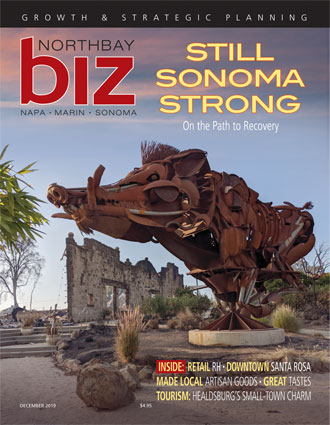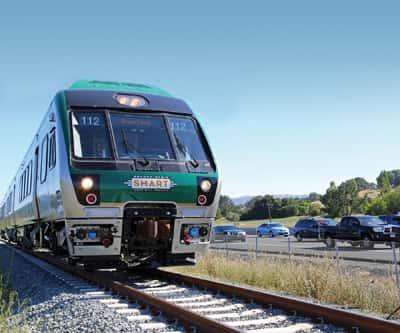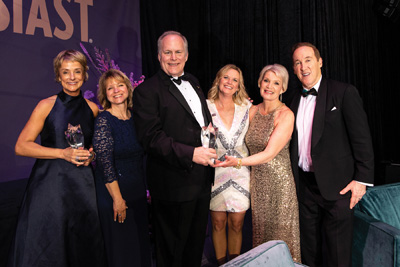Santa rosa traffic: It’s as bad as you think
If you feel like your commute to the Santa Rosa area is among the nation’s worst, you’re actually right, even when considering the largest cities in the United States. Santa Rosa is No. 37 on a list of 50 awful commutes, compiled with data from the 2017 American Community Survey.
 Santa Rosa is sandwiched between Detroit and San Antonio on the list, with its average travel time of 26.7 minutes. The top-three cites listed are New York, Washington, D.C. and San Francisco.
Santa Rosa is sandwiched between Detroit and San Antonio on the list, with its average travel time of 26.7 minutes. The top-three cites listed are New York, Washington, D.C. and San Francisco.
The time-consuming entry into Santa Rosa comes with a cost, in addition to extra battery power or gasoline. Those with long commutes typically get less sleep, can be less happy and are in worse physical shape than their non-commuting peers. That’s because a half-hour drive to work adds an extra 125 hours spent in the car every year.
businessinsider.com
Best Bay Area Companies
Fortune.com curated a list of the 100 best companies to work for in 2019, and 14 are headquartered in the Bay Area. Google, in Mountain View, Calif., reigns supreme as the No. 1 such company in the U.S. One Google employee explained, “The culture makes workers feel they’re valued and respected as a human being, not as a cog in a machine.” Following are the remaining Bay Area businesses on the list.
No. 2 The San Francisco biotech company Genentech, ranked as the 11th best place to work in the U.S., pays their employees to bike to work and offers bike storage facilities, showers and nap pods.
No. Kimpton Hotels is unique for their pet-friendly policies, providing pet insurance and time off to grieve for the loss of their pet.
No. 4 A global cloud computing company, Salesforce, logged roughly 1.3 million volunteer hours and donated more than $100 million in grants. The company’s most spectacular donation is for its new children’s hospital bearing the names of Marc Benioff, the CEO, and his wife Lynne, totaling $200 million.
No. 5 The Silicon-based law firm Cooley values overall contribution to their company, not just financial growth. One employee says, “There are no big egos or hierarchical structures.”
No. 6 Workday, a human resource and finance software developer, loads up on gifts for their employees. They receive branded clothes, laptops, backpacks and a baseball jersey for their company games on top of numerous planned parties to create a fun work environment.
No. 7 Financial management conglomerate, Intuit, ensures that 10 percent of their employees’ time at work is devoted to passion projects, whether it’s related to their job or not.
No. 8 VMware, a virtualization software company from Palo Alto, operates on its own 105-acre campus and provides stress management courses alongside meditation, yoga and tai chi classes.
 No. 9 A developer of semiconductors for electronic devices, Cadence holds one of the lowest turnover rates for a company with more than 2,500 employees. Almost half of them have worked at Cadence for a decade or longer.
No. 9 A developer of semiconductors for electronic devices, Cadence holds one of the lowest turnover rates for a company with more than 2,500 employees. Almost half of them have worked at Cadence for a decade or longer.
No. 10 The design software firm, Autodesk, sends its employees on an all expenses-paid, week-long vacation to the destination of their choosing.
No. 11 The global consultant, Protiviti, hires 90 percent of the interns selected for its eight-week crash course that ends with an Oscar-themed night with awards celebrating everyone’s individuality.
No. 12 Cisco Systems, a network product provider, has more than 3,000 people working from home while also providing a state-of-the-art child-care facility for those who work at the physical office.
No. 13 Adobe Systems, a software developer, has two week-long office shutdowns, a month-long paid sabbatical every five years for employees and a 26-week long, fully paid maternity leave plan.
No. 14 The law firm Orrick Herrington offers incentives for its employees to help innovate the company, including a $50,000 prize for the employee who comes up with the best idea to improve the firm.
fortune.com
More Than 7 million Californians Can’t Afford Basic Needs
About 7.1 million Californians live in poverty and can’t afford to pay for basics such as food and housing, according to a new analysis by the California Budget & Policy Center, based on data recently released by the U.S. Census Bureau.
The state’s poverty rate remains high with 1 in 6 Californians (18.2 percent), struggling to make ends meet, according to the Supplemental Poverty Measure from the Census Bureau. The Supplemental Poverty Measure accounts for the cost of living, such as housing, as well as for the various resources a family may use to cover basic expenses. This may include noncash benefits like tax credits and food assistance.
The census finding build off a recent Budget Center report that showed decades of wage stagnation and pay disparities for low- and mid-wage California workers means people can’t get ahead and thrive in their communities.




